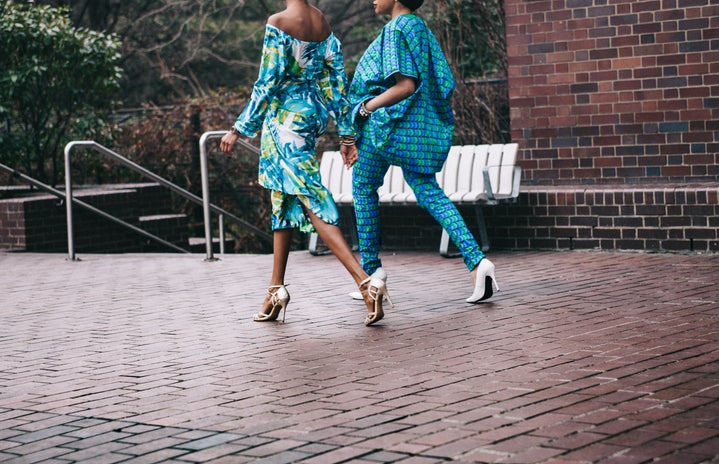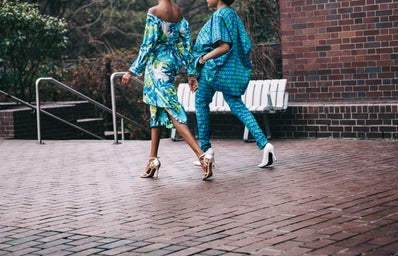Disclaimer: The following article was written for an assignment in GNDS 212: Racism, Colonialism, & Resistance
Since 1965, my family has viewed Canada, and more specifically the Greater Toronto Area, as their home. In the beginning, my grandparents were just two immigrants from Northern Italy, not unlike many others who have come to view this nation as their home. I grew up understanding that it was a privilege to live somewhere as safe, autonomous, and economically productive as Canada. Akin to what I expect many others have been led to believe, I found myself ingrained with this sort of idyllic idea of Canada and its history.
As far as I knew, Indigenous peoples welcomed European settlers with open arms and that was that—there was little-to-no conflict and it was a more or less smooth transition (Freeman, 2010). As I got older, however, I came to realize that this was far from the truth, and my relationship with the land that I call home changed significantly. Now, what my grandparents viewed as the “land of opportunity,” I view with conflicted feelings. On one hand, it is where I grew up and where my family has lived for over 50 years; on the other, it is land that was unfairly taken from the Haudenosaunee—and more specifically, the Huron-Wendat—nation (City of Toronto, 2019). As I learned more about Indigenous peoples and their narrative of oppression and resistance under the ongoing system that is settler colonialism, I found myself looking for remnants of what existed in Toronto before it was Toronto. It was not until this summer, while exploring “the Annex”, a midtown Toronto neighbourhood, that I saw visible markers of the Indigenous history on the land.
(Views from an Annex restaurant; photo by author)
Previously a neighbourhood for Toronto’s elite, the Annex is presently known as a trendy and extremely vibrant neighbourhood. From families to businesspeople, to professors and students, there is no shortage of diversity in the community (Toronto Neighbourhood Guide, n.d.). I spent a considerable amount of time in this neighbourhood this past summer as my significant other lives there; most days, we would walk around the neighbourhood aimlessly, trying a continuous slew of restaurants that seemed to pop up overnight. For however old many of the buildings were, it was a place in a constant state of change and transit. Whether people were enjoying a Sunday brunch, on their way to work, or racing to catch the next streetcar, no one ever seemed to stay still for more than a few moments. It was as if the hum of the city prevented us from ever not being in motion, perhaps because if we were, we would notice the finer, not-so-nice details underneath the shiny storefronts and bubbling mimosas (Byrd, 2011). As a result, it was not until August that I came upon the Native Canadian Centre.
Surrounded by construction and a litany of similar-looking buildings, what drew me to the Native Canadian Centre was its Totem Pole. Representing the “strength, pride and power of the urban Native Community in Toronto,” the gorgeously crafted totem pole was created by an Indigenous artist from Saskatchewan, Don McLeay (First Story, n.d.). Prior to researching the totem pole, I had, ignorantly so, not even been aware that there was such a large community of Indigenous peoples living in Toronto. Ultimately, this led me to do further research on the Annex and on Toronto’s Indigenous history, as well as to my finding of an Anishinaabe eatery just outside the Annex, NishDish. Serving up healthy, affordable meals inspired by traditional Indigenous recipes, NishDish also offered various products produced by Indigenous artists and communities, such as coffee beans and handcrafted smudge bowls (Carlberg, 2017). Although it made me happy to see visible evidence of Indigenous peoples’ presence in Toronto, it was bittersweet. Why was it so difficult for me to find in the first place? How could it be possible that in this age of pursuing decolonisation, Indigenous peoples and culture are still viewed as some far away notion? Does Toronto thus represent a “successful,” model of settler colonial eliminatory practices (Wolfe, 2006)?
(Wild Bison Sausage Breakfast Tacos from NishDish; photo by author)
Despite being part of the Dish with One Spoon Wampum, Toronto—or rather, Tkaronto—is today so consumed by multiculturalism and colonial structures that the thousands of years of history that occurred before it is seemingly erased (Wolfe, 2006). Before Indigenous peoples made treaties with settlers, they made them amongst themselves. Whereas treaties were understood by the settlers as a singular transaction, a ceding of land, they were recognized by Indigenous peoples as a process “governed by the common Indigenous ethics of justice, peace, respect, reciprocity, and accountability,” and as an agreement that was relational rather than transactional (Simpson, 2008). This difference in understanding is especially apparent when reviewing the Toronto Purchase (Barc, 2010). Although recognized as Treaty no. 13, the Toronto Purchase involved the literal purchase of the land by settlers (Freeman, 2010). Can the agreement that led to the Indigenous dispossession of Tkaronto then even be considered a treaty? Or would it be more apt to view them as a transaction of elimination and erasure? And how ironic is it that real estate in Toronto is amongst the most expensive in Canada when the land it lies on was purchased by settlers in 1787, from the Mississaugas, for the equivalent of just $60.00 CAD (Freeman, 2010)? Though a 2010 land claim led to a payout of $145 million to the Mississauga nation, the Toronto Purchase and its aftermath are still undoubtedly examples of great injustice against Indigenous peoples (Duric, 2017).
(Various Wampum Belts, crafted by Darren Bonaparte; photo by author)
As it stands, I am not yet sure how I feel about Toronto and its little-known Indigenous history. While the land that my family lives on and the Annex are still incredibly important to me, knowledge of how it became possible for these areas to even exist as they are looms over and leaves me feeling conflicted. How can I reconcile my knowledge with my notions of home and identity when said knowledge imposes such feelings of grief and guilt over me? Before the Annex and my family’s land was what it is today, it was a place of meeting and communion for multiple Indigenous nations (Sunshine, 2017). It is only through the systemic removal of Indigenous peoples from their traditional lands that Toronto has been allowed to exist as it now does (Simpson, 2017). Despite this history of forced movement and dispossession, however, I have learned that Toronto is still a city in which many Indigenous peoples live and gather (Howard & Proulx, 2011). Though their history has been hidden by townhouses and trendy storefronts, Indigenous peoples are still alive and present in the city of Toronto. As the national narrative changes and conversations on Indigenous history and the phenomenon that is settler colonialism are started and continue, Indigenous peoples become increasingly visible. What this means for me and my understanding of home, however, leaves me with bated breath.
References
Barc, A. (2010, June 18). Nostalgia Tripping: the Toronto Purchase. BlogTO. Retrieved from https://www.blogto.com/city/2010/06/nostalgia_tripping_the_toronto_purchase/
Byrd, J. A. (2011). The transit of empire: Indigenous critiques of colonialism. U of Minnesota Press.
Carlberg, A. (2017, May 5). NishDish. BlogTO. Retrieved from https://www.blogto.com/restaurants/nishdish-toronto/
City of Toronto. (2019, July 5). Land Acknowledgement. Retrieved October 2, 2019, from https://www.toronto.ca/city-government/accessibility-human-rights/indigenous-affairs-office/land-acknowledgement/.
Duric, D. (2017, March 28). The Toronto Purchase Treaty No. 13 (1805). Retrieved October 2, 2019, from http://mncfn.ca/torontopurchase/.
First Story. (n.d.). The Native Canadian Centre’s Totem Pole. Retrieved October 2, 2019, from https://cms.driftscape.com/newsatlas/naFeature.php?UUID=49ef05ed-c66e-11e8-8000-a4480fe5cbe4&FID=149487.
Freeman, V. (2010). “Toronto Has No History!”: Indigeneity, Settler Colonialism, and Historical Memory in Canada’s Largest City. Urban History Review / Revue d’histoire urbaine, 38 (2), 21–35. https://doi.org/10.7202/039672ar
Howard, H. A., & Proulx, C. (Eds.). (2011). Aboriginal peoples in Canadian cities: Transformations and continuities. Wilfrid Laurier Univ. Press.
Simpson, L. (2008). Looking after Gdoo-naaganinaa: Precolonial Nishnaabeg diplomatic and treaty relationships. Wicazo Sa Review, 23(2), 29-42.
Simpson, L. B. (2017). My Radical Resurgent Present. As We Have Always Done Indigenous Freedom Through Radical Resistance. Retrieved from https://www-jstor-org.proxy.queensu.ca/stable/10.5749/j.ctt1pwt77c.3?refreqid=excelsior:5ce7c26a3fa370ac8cd56834dfd45920&seq=2#metadata_info_tab_contents
Sunshine, F. (2017, June 21). Canada 150: Toronto traces its Indigenous history back 11,000 years. Metroland News. Retrieved from https://www.toronto.com/community-story/7218897-canada-150-toronto-traces-its-indigenous-history-back-11-000-years/
Toronto Neighbourhood Guide. (n.d.). The Annex. Retrieved October 2, 2019, from http://www.torontoneighbourhoods.net/neighbourhoods/midtown/annex?overview.
Wolfe, P. (2006). Settler Colonialism and the Elimination of the Native. Journal of genocide research, 8(4), 387-409.



